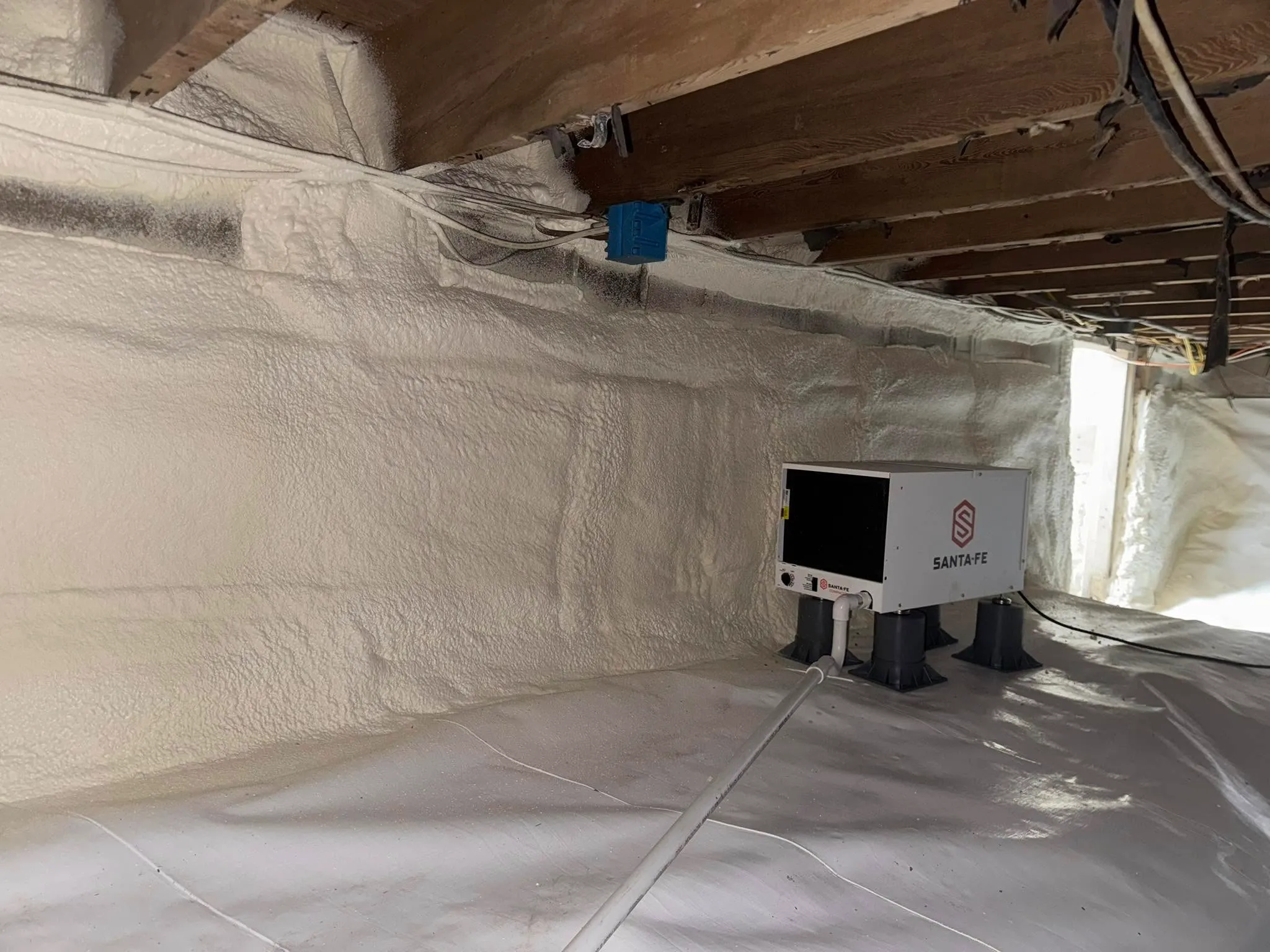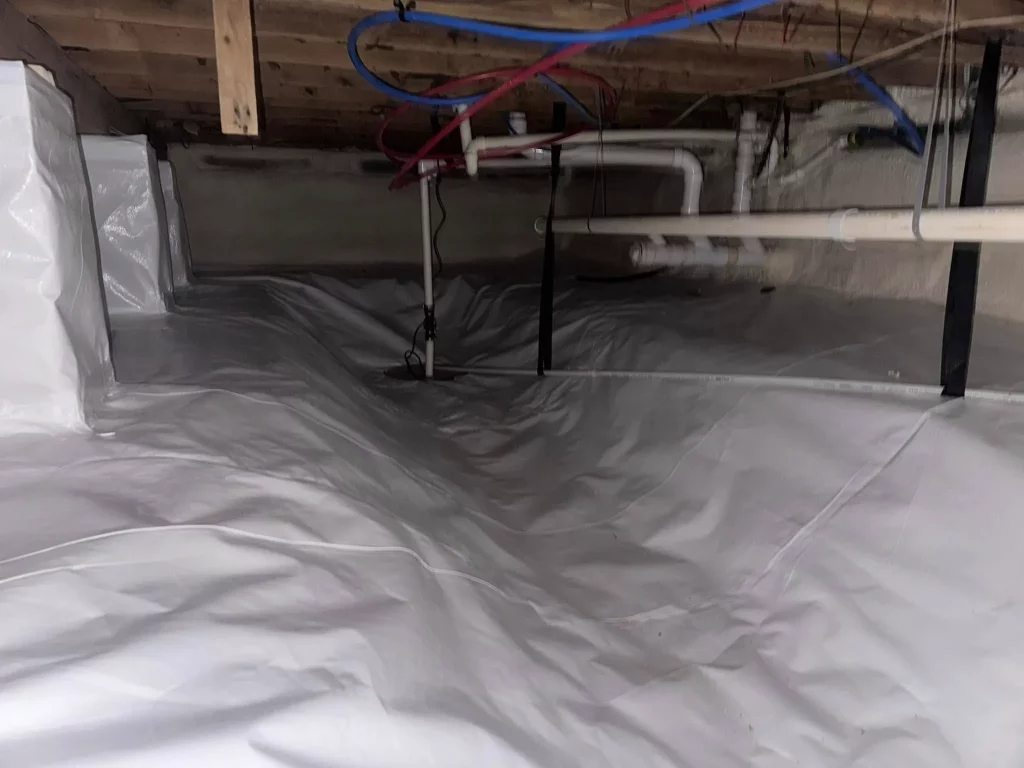
Many homes in Annapolis, MD face higher energy bills due to air leaks in uninsulated or poorly sealed crawl spaces. These leaks allow conditioned air to escape and outside air to enter, forcing heating and cooling systems to work harder, especially in the area’s humid subtropical climate with hot summers and cold winters. Proper insulation and sealing can cut this energy loss by up to 20 percent, based on data from the U.S. Department of Energy. Homeowners often overlook this hidden area, but addressing it directly lowers utility costs.
This article covers signs of problems, ways to fix them, and factors to weigh before acting. Readers gain practical steps to evaluate and improve their setup. Information draws from hands-on work with local homes, highlighting common pitfalls in Maryland’s coastal environment where moisture adds extra challenges.
Crawl spaces sit under most Annapolis homes, providing space for plumbing and wiring. Without barriers, they become pathways for energy waste. Warm air rises in winter, pulling cold air through gaps into the house. In summer, cool indoor air drops down and escapes. The U.S. Energy Information Administration reports that homes lose about 25 percent of energy through floors and walls, with crawl spaces contributing a large share in older builds common around Chesapeake Bay.
Beyond these air movements, moisture plays a big role in Annapolis. High humidity levels, often over 70 percent in summer according to the National Weather Service, lead to condensation in unvented crawl spaces. This dampness reduces insulation effectiveness and promotes mold, which further damages materials. A study by the Building Science Corporation notes that wet crawl spaces increase heating needs by 15 percent due to evaporative cooling effects.
Energy bills in Maryland average $1,500 annually for electricity, per the Maryland Public Service Commission. Poor crawl space conditions account for 10 to 15 percent of that total in typical single-family homes. Sealing these areas prevents pests and improves air quality, but the main gain comes from stabilizing temperatures.
Bonus Tip: Check for standing water after heavy rains, a frequent issue in Annapolis. Simple grading adjustments outside the foundation can divert runoff and protect the space below.
Homeowners spot crawl space issues through uneven temperatures and rising bills. Cold floors in winter signal air infiltration from below. Drafts near baseboards or registers point to gaps. Higher humidity indoors, above 50 percent, often ties back to moisture migrating up from the crawl space. Musty odors or visible mold on walls suggest ongoing problems.
Utility spikes without changes in usage serve as red flags. In Annapolis, where average winter temps drop to 30 degrees Fahrenheit, bills jump if the system runs constantly. Pest activity, like termites or rodents, thrives in neglected spaces and indicates poor sealing.
Inspect visually if accessible. Look for insulation that’s compressed, missing, or wet. Gaps around pipes or vents allow air exchange. The Environmental Protection Agency states that unsealed crawl spaces contribute to 30 percent more energy use in humid zones like Maryland.
To summarize these signs and their local relevance, here’s a table outlining common signs and their impacts:
| Sign | Potential Impact on Energy Bills | Why It Happens in Annapolis |
|---|---|---|
| Uneven floor temperatures | Increases heating/cooling by 10-15% | Humid air infiltration from bay proximity |
| Drafts from baseboards | Adds 5-10% to monthly costs | Gaps in older colonial-style homes |
| High indoor humidity | Raises dehumidifier use by 20% | Seasonal moisture from 40+ inches annual rain |
| Musty smells or mold | Indirect 8% hike from poor air quality | Condensation in unvented spaces |
This table helps identify issues quickly. Addressing them early prevents bigger expenses.
Fixing crawl space problems yields clear energy savings. Insulating the rim joists and sealing the floor reduces heat loss by 15 to 25 percent, according to the Oak Ridge National Laboratory. In Annapolis homes, this translates to $150 to $300 annual savings on bills. Better air sealing stops moisture entry, maintaining even temperatures year-round.
Health improves too, with less dust and allergens entering living areas. Structural integrity benefits from reduced wood rot in the humid climate. Long-term, these changes extend HVAC system life, avoiding premature replacements that cost thousands.
Market data shows Maryland homeowners save an average of 12 percent on energy after upgrades, per a report from the Maryland Energy Administration. Closed crawl spaces, where the area stays dry and conditioned, perform best in coastal areas.
Bonus Tip: Prioritize rigid foam board for rim joists in damp Annapolis spots. It resists moisture better than fiberglass and lasts longer.
Assess home age and layout first. Older Annapolis properties, built before 1980, often have dirt floors and vented designs that worsen energy loss. Budget runs $1,500 to $5,000 for basic sealing and insulation, depending on size. Weigh DIY versus professional help; amateurs risk improper sealing that traps moisture.
Climate factors matter. Annapolis’s freeze-thaw cycles demand durable materials to avoid cracking. Check local codes through Anne Arundel County regulations, which require vapor barriers in new installs. Energy audits reveal exact loss points, costing $300 to $500 but guiding targeted fixes.
Long-term value includes resale boost. Homes with efficient features sell 5 percent higher, based on National Association of Realtors data. Consider radon testing, as Maryland has moderate levels that crawl spaces can amplify.
Evaluate insulation types: spray foam seals tightly but costs more upfront, while batts suit tighter budgets. Factor in utility rebates from BGE, up to $1,000 for qualified improvements.
Bonus Tip: Schedule inspections during dry seasons, like spring in Annapolis, to get accurate moisture readings before summer rains hit.
Common questions include how long basic encapsulation takes and whether it raises resale value. Basic encapsulation takes two to three days for a 1,000-square-foot home.
It does raise resale value, as efficient homes appeal to buyers in energy-conscious Maryland.
What about vented versus unvented designs? Unvented works better locally, controlling humidity without constant air exchange.
Homeowners also ask if temporary fixes suffice. Plastic sheeting helps short-term but degrades quickly in humid conditions. Full sealing provides lasting results.
Start with a professional inspection to map issues. Clean debris and fix foundation cracks to block entry points. Install a vapor barrier over the dirt floor, using 6-mil polyethylene sealed at edges. Insulate walls and joists with foam or fiberglass rated for damp areas.
Seal all penetrations around pipes and wires with caulk or foam. Consider a dehumidifier for persistent moisture, set to 50 percent. Test air quality post-work to confirm improvements.
In Annapolis, elevate vents above flood levels to handle occasional surges from the bay. These steps combine to cut energy use effectively.

Savings average 15 to 20 percent after proper insulation and sealing. In Annapolis, with bills around $125 monthly, that means $225 yearly back in your pocket. Results vary by home size and current setup, but data from Energy Star confirms these figures for similar climates.
Yes, for long-term homes. Initial outlay pays off in three to five years through lower bills and maintenance. It also prevents costly repairs from moisture damage, common in Maryland’s wet weather.
DIY works for small fixes like adding insulation, but full sealing needs pros for safety and code compliance. Access tight spaces risks exposure to hazards like asbestos in older homes.
Install sump pumps and improve drainage. Combine with raised insulation to keep it dry. Local Annapolis flooding from storms requires these extras for reliability.
Run a blower door test during an energy audit. It measures leaks and pinpoints sources. Simple DIY checks include feeling for cold spots under floors on chilly days.
Crawl spaces drive up Annapolis energy bills through leaks and moisture. As discussed earlier, sealing and insulating them cuts costs by 15 to 25 percent. Watch for signs like drafts and uneven heat, then weigh factors like home age and local codes. Practical steps include barriers and audits. Evaluate your setup against these points to match needs and goals for lower bills and better comfort.
Take time to inspect the crawl space or schedule an assessment. Contact Peninsula Insulation, LLC at (410) 770-2624 or email wil@mdsprayfoam.net for guidance on local options. Focus on steps that fit the home’s specifics to achieve real savings without unnecessary work. This approach ensures decisions align with Annapolis conditions and budget realities.